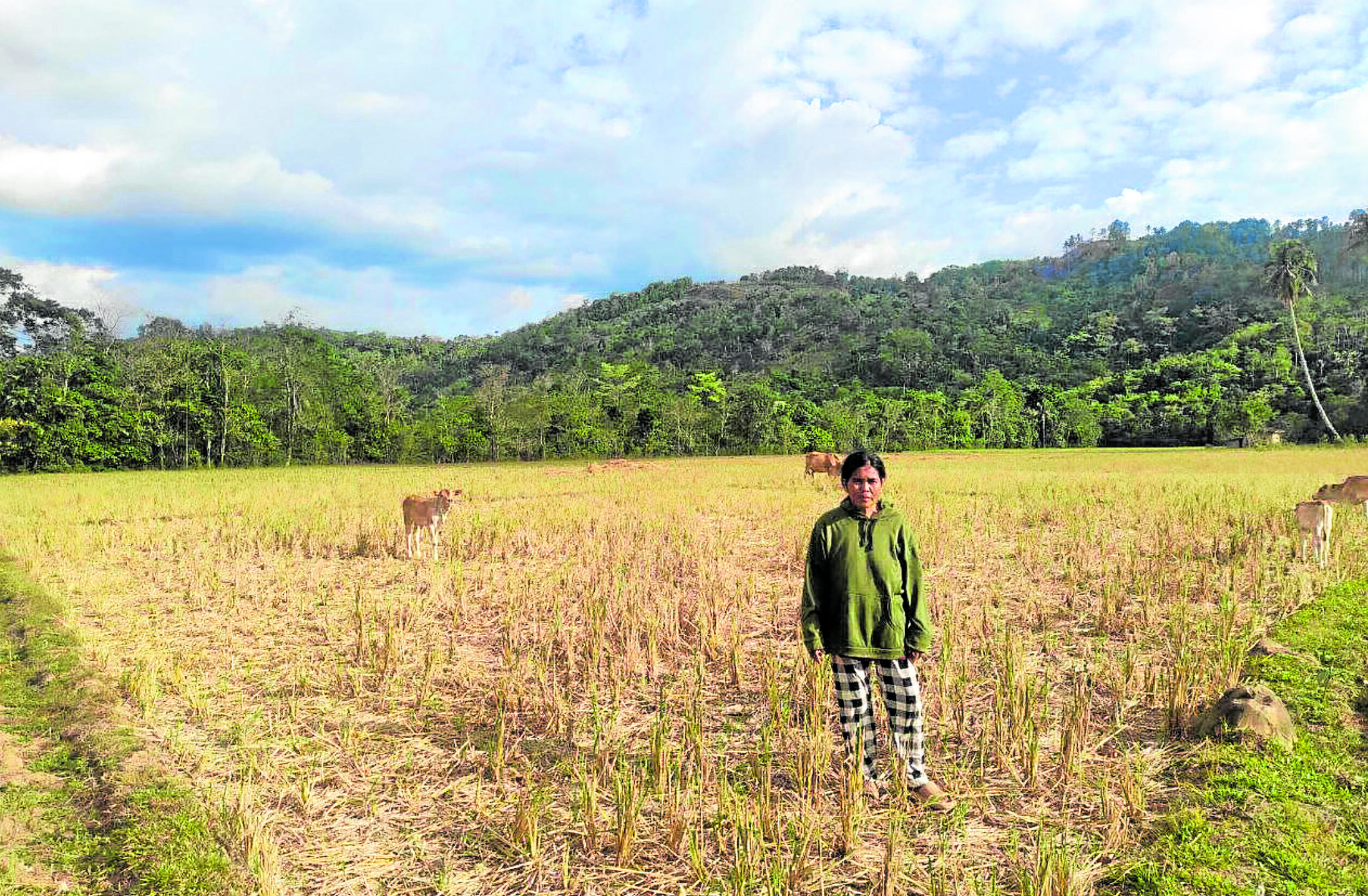
ALL DRY A farmer in Pagadian City in Zamboanga del Sur province visits her rice farm, now all dried up due to the absence of rain amid the El Niño weather phenomenon. The Zamboanga Peninsula is among the 11 regions in the country worst hit by the dry spell and drought. PHOTO COURTESY OF PAGADIAN CITY AGRICULTURE OFFICE
MANILA, Philippines — The damage to crops due to the prolonged drought caused by the El Niño phenomenon has already reached P3.9 billion, covering about 66,000 hectares nationwide, the spokesperson of Task Force El Niño said on Wednesday.
In a television interview, Asst. Sec. Joey Villarama said a total of 103 cities and towns, including five provinces, had already declared a state of calamity due to El Niño damage, mainly shortage of water for irrigation.
READ: Roxas, Zamboanga cities to feel 45°C heat index April 23
“Based on the latest data from the Department of Agriculture, the damage to agriculture has reached P3.94 billion—that’s equivalent to about 66,000 hectares,” he said.
According to him, while El Niño has affected almost the entire country, five provinces are now under a state of calamity due to severe drought: Occidental Mindoro, Antique, Sultan Kudarat, Basilan and Maguindanao del Sur.
“The President has mentioned that the whole country is now affected, albeit in varying degrees, so the focus and assistance that the government is giving to the localities is also dependent on the need of each province,” Villarama said.
‘Negligible’
But he added that the government remained optimistic that farmers could still recover up to 78 percent of the 60,000 hectares of damaged farmlands.
“The rice farms may look dried up or burnt, but their crops may still be recovered; for those that are already unrecoverable, the dried-up plants can be given as feeds for farm animals,” he said.
According to Villarama, the agricultural damage wrought by El Niño is still considered “negligible.”
“Based on those figures, we would like to state that somehow, the preventive measures and interventions that we have put in place somehow helped because the damage is considered negligible compared to what we have experienced in terms of damage historically,” he said.
The government is working on short- and long-term solutions to solve the water shortage, mainly to irrigate farmlands.